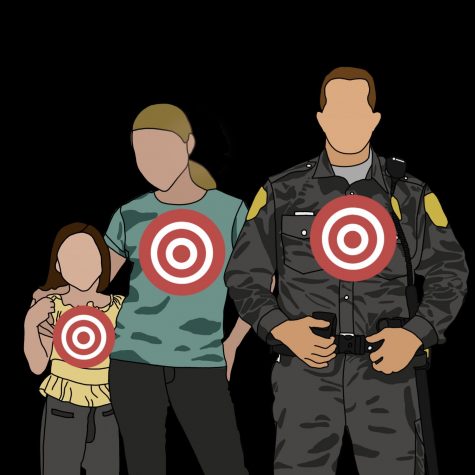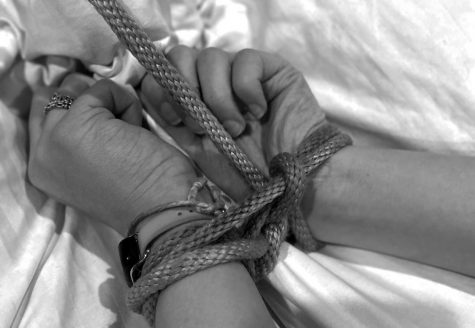What Leaders Aren’t
Qualities of good leadership are easy to see, but qualities of bad leadership can be felt by every follower.
Poor leadership has the capacity to ruin collaborative relationships. Principal Eric Hamilton spoke on the qualities that create poor leadership and their impact on people. “Ignoring people, not engaging anyone, holding grudges, anger, a lack of trust and ineffectiveness,” Hamilton said. “They all manifest into an unwillingness to change or receive feedback.”
It’s early on a Saturday morning and no one on the team wants to be at practice. They are all dog tired. It’s a week to competition. Everyone feels the pressure weighing on them like a load of bricks. They have drilled their routine a million times, but they are seeing no improvement. They are getting frustrated with one another. They are getting angry.
Some girls keep shouting at others for forgetting the steps they had gone over just five minutes ago. One is condescending toward the rest of the group about what she thinks the steps should be, but her words fall on deaf ears. No one wants to follow her. Their coaches keep telling them that they need to figure it out as a team, but there are so many voices saying what they want to do, what they think is best. So many voices but no leaders.
Tensions rise and anger flares and one girl thinks to herself, “I don’t want to do this anymore.” The thought only lasts for a moment, but it is enough to make her wonder how she could have lost passion for the thing that had once been the love of her life. The feeling almost breaks her.
Tensions rise and anger flares and one girl thinks to herself, “I don’t want to do this anymore.” The thought only lasts for a moment, but it is enough to make her wonder how she could have lost passion for the thing that had once been the love of her life. The feeling almost breaks her.
Poor leadership has the power to negatively impact the people who follow. Just as there are many shades of good leadership, there are also many shades of bad leadership, but all of them can have some seriously damaging effects on the group as a whole. No matter the environment, whether it is a sports team, a classroom or an office, poor leadership manifests itself into a lack of productivity, respect, willingness to work and overall enjoyment of doing the work.
According to Forbes, there are five major qualities of bad leadership: poor integrity, lack of adaptability, little vision for the future, lack of accountability and poor communication skills. It doesn’t take much for these qualities to turn what once was a good working environment into a toxic situation. It all comes down to the behavior of the person at the forefront of it all.
The most significant mistake that people in leadership positions make is maintaining the idea that they always have to be in the center of everything 100 percent of the time, that they always have to be the primary decision maker. That kind of thinking, if allowed to fester, can lead to perceptions of toxic superiority. Any person in a leadership position who thinks he or she is above reproach can not be an effective leader. Principal Eric Hamilton discussed the qualities of bad leadership that he observes in his job as an educator.
“Ignoring people, not engaging anyone, holding grudges, anger, a lack of trust and ineffectiveness,” Hamilton said. “They all manifest into an unwillingness to change or receive feedback.”
Hamilton went on to talk about situations in which he had experienced poor leadership as a follower and how that experience impacted him.
“I had a leader not talk to me,” Hamilton said. “A leader chose not to talk to me because of a disagreement that we’d had. That person ignored me for about a year. We would pass in the hallway, I would say hello and he would not respond. He would just keep walking. I knew he heard me. I made a point of looking at the person and trying to make eye contact.”
Effective communication is a vital part of maintaining good leadership. It also comes into play when responsibilities need to be delegated to others. A major pitfall that leads to poor leadership is the inability to admit one’s faults. No one is good at everything and part of being a leader is knowing one’s weaknesses and allowing other people to take over in those areas. A poor leader has either not identified these weaknesses or doesn’t want to admit that they exist. Coach and social studies teacher Brian Glashagel discussed the different types of leaders on his teams.
“There are multiple ways to lead and sometimes you need to know when to follow,” Glashagel said. “If you’re a leader by example and there’s a time in a season when it’s time to be vocal, you’re trying to be a leader where you’re not. That doesn’t work.”
Failing to admit one’s weaknesses also manifests itself into people placed in leadership roles being incompetent regarding the area in which they lead. This kind of leader cannot effectively facilitate respect among their followers and ultimately causes a lack of productivity. Senior and president of the A Cappella choir Cale Wolf talked about his definition of poor leadership and how it applies to any situation.
“It’s basically always a steadfast rule,” Wolf said. “If you are incompetent, if you don’t know what you’re leading in or if you don’t have everyone’s trust, there’s no way that you can be a good leader in any circumstance.”
When asked about the pitfalls of his own leadership style, Wolf admitted that he has had a tendency to be a bit arrogant and harsh when he gives instruction. He also mentioned that when he began his leadership role in the choir program, he was intimidated by the pressure of commanding people’s respect and attention. It caused him to be reserved and quiet, but he shared how he has learned from those experiences and become a better leader.
“Now, I have learned to raise my voice and I’m not really scared to do that, “ Wolf said. “Some of it was developed on my own, but a lot of it came from role models and other leaders from the past. Former choir students, particularly former choir presidents like Kar Toman, really showed me how to do the job.”
Bad leadership is not unfixable. It’s just a matter of recognizing the qualities of bad leadership, not just in others, but in oneself so that the problem can be remedied and the group can be a safer and more effective environment for everyone involved.









![The Black Lives Matter movement has become a growing trend in recent years. Everything people post on Instagram and everything [related to] politics is a trend now sophomore Kelsey Aviles said. Despite how serious of a topic it is, some individuals post about BLM specifically because it is trendy.](https://www.sequoitmedia.com/wp-content/uploads/2020/12/Untitled-Artwork-3-475x168.jpg)



